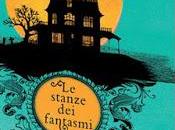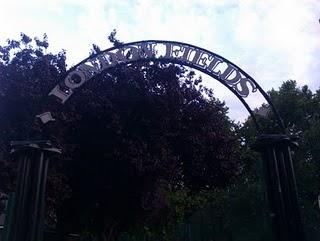 First of all, I was staying just down the road from London Fields, the city park with a bucolic name where the homonymous novel by Martin Amis is NOT set. M.A. in fact decided that West London, and Notting Hill in particular, was a better place for Nicola, Keith and Guy to live. Of course, while you wander around Hackney you may find some remedies for your “Amis disappointment”, such as bookshops on a boat on Regent's Canal or... reading lanes.
First of all, I was staying just down the road from London Fields, the city park with a bucolic name where the homonymous novel by Martin Amis is NOT set. M.A. in fact decided that West London, and Notting Hill in particular, was a better place for Nicola, Keith and Guy to live. Of course, while you wander around Hackney you may find some remedies for your “Amis disappointment”, such as bookshops on a boat on Regent's Canal or... reading lanes.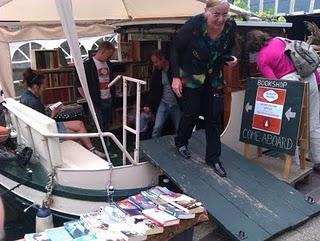
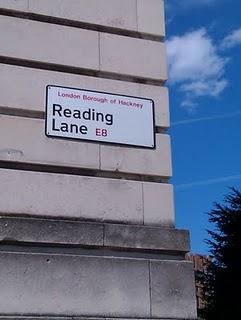 For a radical change, I climbed the stylish neighbourhoods of Highgate and Hampstead, both on the hills in the north of the city. In Highgate there is a famous cemetery, where among other people George Eliot and Karl Marx are buried.
For a radical change, I climbed the stylish neighbourhoods of Highgate and Hampstead, both on the hills in the north of the city. In Highgate there is a famous cemetery, where among other people George Eliot and Karl Marx are buried. 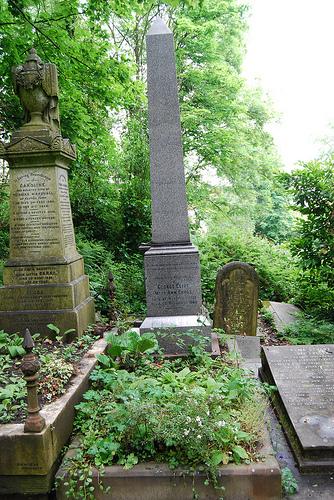 While wild grass grew on Eliot’s modest grave and not a single flower was in sight, people stop by Marx’s majestic grave all the time, leaving flowers and starting interesting discussions on philosophy. I read about one such discussion that eventually conflated into Ian Buruma’s famous book “Occidentalism”, a counterpart to Edward Said’s seminal book on the orientalist discourse. I stopped on Eliot’s grave and I felt sorry for her, even though I haven’t read a single line of her. This is only a temporary impediment, because on the aforementioned bookshop on a boat I bought her most famous work, “Middlemarch”. It took some time before I (or the friendly bookseller) could find a copy of it inside the boat, but after five minutes of intense search I was rewarded with a hardback edition of Eliot’s famous book. By the way, during my holiday I also had a trip to this small place just outside London where I used to be an Italian language assistant. The building that hosts the school once was George Eliot’s summer house and she may have written parts of her novels there!
While wild grass grew on Eliot’s modest grave and not a single flower was in sight, people stop by Marx’s majestic grave all the time, leaving flowers and starting interesting discussions on philosophy. I read about one such discussion that eventually conflated into Ian Buruma’s famous book “Occidentalism”, a counterpart to Edward Said’s seminal book on the orientalist discourse. I stopped on Eliot’s grave and I felt sorry for her, even though I haven’t read a single line of her. This is only a temporary impediment, because on the aforementioned bookshop on a boat I bought her most famous work, “Middlemarch”. It took some time before I (or the friendly bookseller) could find a copy of it inside the boat, but after five minutes of intense search I was rewarded with a hardback edition of Eliot’s famous book. By the way, during my holiday I also had a trip to this small place just outside London where I used to be an Italian language assistant. The building that hosts the school once was George Eliot’s summer house and she may have written parts of her novels there!Highgate Cemetery is next to Waterlow Park, which is really a lovely place if you want to have a break from London’s chaotic and intense life. I sat under a tree, with children playing on the lawn and people sunbathing, with my copy of “War and Peace” and a couple of books of poetry (not exactly the kind of reading you would do on the tube). Hampstead, with its beautiful, picturesque (and incredibly expensive) houses, can boast a population of artists and intellectuals. This is also where John Keats’ house stands, only nobody seemed to know where it was, causing me to wander around the neighbourhood for more than one hour. His house is rather modest: he only rented a room and a parlour. It’s thrilling to know that there he wrote his “Ode to a Nightingale”, one of his most famous poems. Dear John, buried in Rome, who died at 26 years of age. What I was surprised to learn during my visit was that his friend called him ‘Junkies’. John Keats came from East London, from Moorgate to be precise, not far from where I was staying. Apparently he introduced himself as ‘Junkies’, with a distinguishable Cockney accent. Hilarious! During his lifetime they used to call him ‘a Cockney poet’, which when I think of his poetry sounds preposterous.
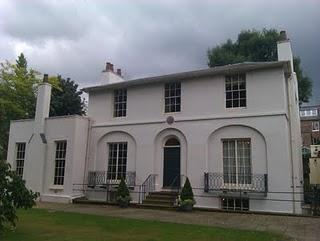
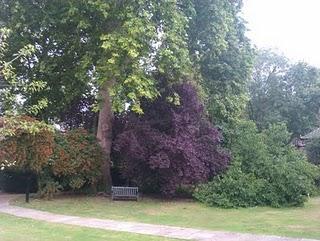
I wonder if he wrote "Ode to a Nightingale" here...


Punting in Cambridge
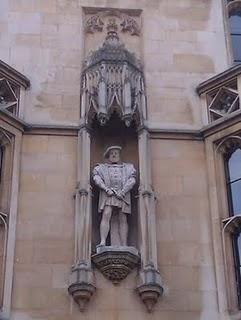
In Stratford-upon-Avon, everything revolved around the bard. His birthplace is a stunningly well-preserved house in the centre of the small town. Of course you can visit it (and you’ll have a taste of that peculiarly British obsession for fake meat or plastic eggs on display in the kitchen). In the garden some of the staff is in costume and improvises fragments of Shakespeare’s plays. While I walked on the garden I spotted a bust of Indian poet and playwright Tagore, who was a great admirer of the bard. I wonder why him, with all the admirers Shakespeare has had!
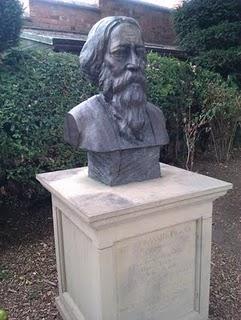
The marvellous cottage of Shakespeare’s wife, Anne Hathaway, is another place that enchanted me, with its garden full of herbs and flowers, its orchard and its maze. The tour guides love to explain how the house passed on one generation after the other in the Hathaway family and how many expressions we use in English, such as ‘raining cats and dogs’ or ‘one over the eight’, originated in the Tudor period, when life conditions were notoriously very different from ours. The atmosphere here was simply peaceful and romantic. Together with Shakespeare's grave in the small, beautiful church of the town and the Shakespeare Royal Company, it made my day!
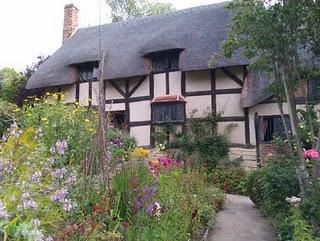
Anne Hathaway's cottage
In this almost unintentional literary tour, Westminster Abbey was of course included. Together with the burial monuments of Queen Elizabeth I and much of the Tudor dynasty, the abbey is famous for its Poets' Corner, where writers such as Charles Dickens, Geoffrey Chaucer (that my Italian-speaking audioguide called Goffredo!), Rudyard Kipling and Thomas buried are buried. The problem is that sometimes you cannot distinguish the burials from the memorials, so the visitor is led to think that also the Brontes's sisters, W.H. Auden or Jane Austen are buried here, but they are not.Well, I'm sure I have forgotten some of the many things I have seen (ops, Pinter's play!) and I could write about things I have visited in my previous visits to the UK (Virginia Woolf's house in Bloomsbury or Walter Scott's munument in Edinburgh, not to mention Deacon Brodie's tavern which inspired Stevenson to write one of his most famous novels), but I'm sure you've heard enough for now...
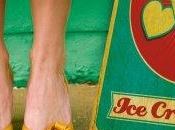
![[Rubrica: Italian Writers Wanted #12]](https://m22.paperblog.com/i/289/2897898/rubrica-italian-writers-wanted-12-L-cIVqIF-175x130.png)

